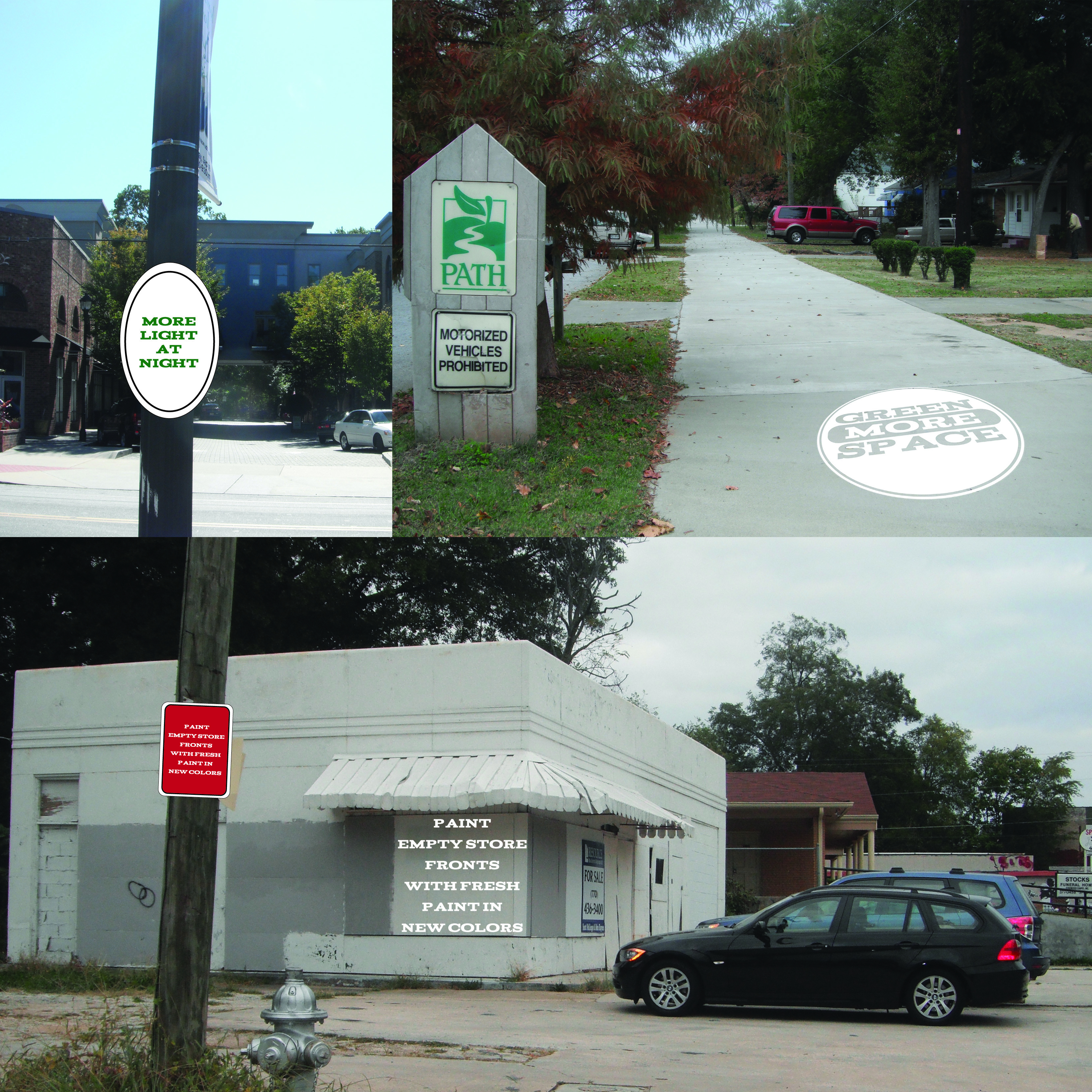This community-driven art project is focused on the reinvention of abandoned buildings by means of design to improve sustainability of communities and trigger awareness. Inspired by my local neighborhoods in Atlanta, the project is a reaction to the increase of abandoned buildings and lots in the area as the recession continues and the economy struggles.
Objectives
- Create something that is beautiful, interesting, and engaging that community members and visitors alike can enjoy on a simple, surface level.
- Create a public space where community members could gather and interact with the space and potentially each other.
- Promote a safe, pedestrian friendly environment where pollution, graffiti and crime are discouraged.
- Advocate for community. Work with business owners and residents to design for the people of the neighborhood.
Benefits
- Raise awareness among community members and visitors that the property is vacant – Potentially help gain exposure for your building to lease / sell / rent to future business owners.
- Reduce crime and graffiti surrounding vacant building. Throughout month duration of project, I will be responsible to set up, maintenance, and break down.
- Turn a neglected space into a productive one. Bring activity to the area. Promote public space.
Research Methodology
As vacancies rise in Atlanta neighborhoods, I’ve asked resident and business owners their views on some of the empty and/or abandoned properties that are among them. The opinions are largely of concern and hope for new business in the area. On the other hand, when talking to building owners, I was surprised to hear the lace of concern or even care of the situation in neighborhoods. The intense contrast of views is quite interesting to say the least.
Interviews
How do property owners of vacant areas respond to revitalizing buildings, lots, etc.?
Property owners of vacant buildings have mixed feelings at best regarding the effects of vacancy rates in communities. Most of the property owners that I have spoken with do not live in the area or see the establishments on a normal basis. Because this is the case, I believe that some do not truly understand the detriment associated with vacancy rates, empty lots, over-grown parking lots, and the like. How can one if they are not present to see the issues? A property owner that takes care of his property visits the site about once per month to clean, repaint, pick up trash, and trim landscape. Many of these owners have bought foreclosed properties and take care of many properties around the city. Some property owners like owner of 299 Moreland Avenue, Coin Laundry in Little Five Points refused to answer any questions regarding my efforts to clean up and repurpose vacant areas and instead repeated over and over, “all I care about is money in my pocket.”
How do residents react to vacant places in their community?
Residents, on the other hand, respond much differently to the issue. In general, there is a much larger concern for revitalizing the business communities of their neighborhoods and improve the state of empty storefronts. Citizens have voiced opinions that range from simple improvements like cleaning up trash and increasing lighting at night to more detailed responses like repainting the empty storefronts or encouraging art in the empty spaces.
Feedback for Improvement
- A farmers market or community garden would be a great way to use these empty buildings
- Paint empty store fronts in new colors
- More light at night
- More green space
- More businesses
- More police presence
- I’d love to see some diverse restaurants in the neighborhood.
- It’s the little things. Like picking up trash
- Less empty parking lots
Conceptual Development
Below are some ideas for the project that will re-energize these empty spaces in the neighborhood.
Some artists and designers that are inspirational to my work include Tyree Guyton, Candy Chang, Jenny Holzer, Gordan Matta-Clark,and Christo.Some artists and designers that are inspirational in my work include Tyree Guyton, Candy Chang, Jenny Holzer, Gordan Matta-Clark,and Christo.








Leave a Reply to Camilla WatsonCancel reply